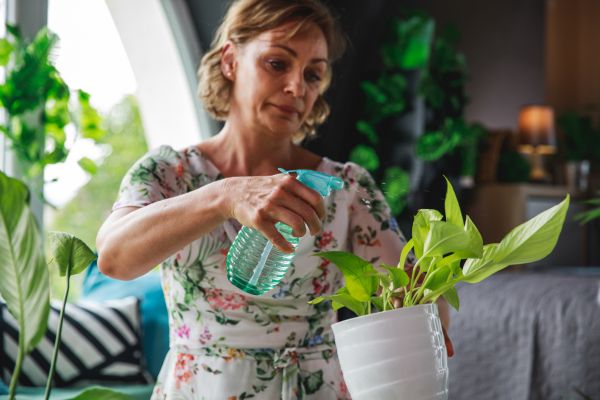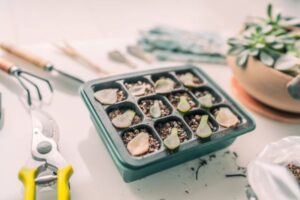Indoor plants have a magical way of transforming any living space into an oasis of tranquility, infusing the air with a breath of fresh oxygen and soothing the soul with their natural beauty. Whether you are an experienced indoor gardener or just starting your green journey, one of the most critical aspects of plant care is mastering the art of watering. While it may seem like a simple task at first glance, watering indoor plants effectively is a delicate balance that requires understanding the individual needs of each plant, the unique conditions of your environment, and the science behind proper hydration.
Imagine the sheer joy of witnessing your houseplants thrive with lush foliage, vibrant blossoms, and radiant energy, all because you have mastered the art of watering. On the flip side, the heartache of seeing your beloved green companions succumb to the perils of overwatering or drought can be devastating. But fear not, as this definitive guide is here to be your trusted companion on this botanical journey, equipping you with invaluable insights, techniques, and tips to become a proficient indoor gardener. As you delve into the depths of this guide, you will learn the nuances of watering your indoor plants, empowering you to foster a flourishing indoor garden that brings harmony and happiness to your home.
In this comprehensive guide, we will explore the fundamentals of watering, understanding the diverse requirements of different plant species, and deciphering the subtle language of plants that indicate their thirst. We will unravel the various watering techniques at your disposal and explore the frequency with which you should quench your plant’s thirst. Moreover, we will go beyond the basics, offering you additional tips and tricks to refine your watering approach and cater to your indoor plants’ every need. By the time you reach the conclusion of this guide, you will be equipped with the knowledge and confidence to nurture a diverse array of indoor plants, each thriving under your tender care.
So, ready your watering cans and prepare to embark on a transformative journey into the fascinating world of indoor gardening. Let’s delve into the depths of how to water your indoor plants, unraveling the secrets that nature holds, and embracing the rewards of being a green thumb within the cozy confines of your home.
Understanding Watering Basics
Watering indoor plants may seem like a simple task, but it involves more than just splashing water on the soil. One of the fundamental aspects is understanding the watering needs of different plant species. Some plants prefer drier soil and can tolerate occasional neglect, while others require consistently moist soil. Research the specific needs of each plant you own, considering factors like their natural habitat and growth patterns. Additionally, pay attention to the size of the plant and its container, as these factors influence how much water the plant can absorb and retain.
When watering your indoor plants, always use room-temperature water. Cold water can shock the plant’s roots, while hot water may contain excess minerals that could harm the plant. Avoid using softened water, as the high salt content can be detrimental to many indoor plants. Instead, collect rainwater or leave tap water in an open container for 24 hours to allow chlorine and other chemicals to dissipate.
Signs Your Indoor Plants Need Water
To become a skilled indoor gardener, you must learn how to read the signs that your plants give you when they need water. Over time, you’ll be able to recognize these signals and provide water before the plant becomes stressed. One of the most common signs of dehydration is drooping leaves. However, some plants naturally droop during the day, so it’s essential to know the typical behavior of each species.
Wilting is another clear indicator that your plant needs water. Check the soil’s moisture level by inserting your finger about an inch into the soil. If it feels dry, it’s time to water. Some plants also display yellowing leaves when they lack water, while others may exhibit leaf curling or browning at the tips. Familiarize yourself with the specific signs displayed by each plant in your collection to accurately assess their watering needs.
Watering Techniques for Indoor Plants
Watering techniques can significantly impact your indoor plants’ health and overall growth. The most common watering methods for indoor plants are the bottom-up and top-down approaches. For the bottom-up method, place your potted plant in a shallow tray filled with water and allow the soil to absorb the moisture from the drainage holes. This technique is particularly useful for plants sensitive to water on their leaves, such as African violets.
The top-down watering method involves gently pouring water onto the soil’s surface until it starts to drain from the bottom. This technique works well for larger plants or those with dense foliage. However, ensure not to drench the leaves, as excessive moisture can lead to fungal issues. Additionally, using a watering can with a narrow spout allows for better control and helps avoid overwatering.
Frequency of Watering
The frequency of watering your indoor plants depends on various factors, including the plant species, its growth stage, environmental conditions, and the type of potting mix used. As mentioned earlier, understanding the specific needs of each plant is crucial for determining the watering schedule.
Before watering, always check the soil’s moisture level. Stick your finger into the soil or use a moisture meter to gauge if it’s time to water. Overwatering is a common issue that can suffocate the plant’s roots and lead to root rot. In contrast, underwatering deprives the plant of essential nutrients and moisture, causing it to wilt and potentially die. Finding the right balance is key to maintaining healthy indoor plants.
Additional Watering Tips
Apart from the basics, some additional tips can elevate your indoor gardening skills and keep your plants thriving. Consider grouping plants with similar watering needs together. This practice creates a microenvironment that caters to their requirements more effectively. Additionally, use a well-draining potting mix to prevent waterlogging and improve aeration around the roots.
When going on vacation or leaving your plants unattended for an extended period, consider using self-watering devices or asking a friend or neighbor to care for them. However, always provide clear instructions on the watering needs of each plant to avoid any mishaps.
Conclusion
Congratulations, you have now journeyed through the verdant realms of indoor plant care and unlocked the secrets to mastering the art of watering! Armed with the knowledge acquired from this definitive guide, you are well-prepared to embark on a fulfilling and rewarding journey as an indoor gardener. The thriving green haven you create within your home will not only be a testament to your dedication but also a source of joy, relaxation, and improved well-being for you and your loved ones.
As you continue on this botanical adventure, always remember that each plant is a living, breathing entity with its unique personality and requirements. Take the time to observe, learn, and connect with your plants as they silently communicate their needs through subtle cues. With attentive care, you will notice the subtle transformations of your plants, with new leaves unfurling, buds blossoming, and tendrils reaching towards the sunlight, reflecting the bond you have nurtured.
In addition to providing the right amount of water, don’t forget to shower your indoor plants with love and affection. Regularly inspect them for signs of pests or diseases, and gently remove any dead leaves or debris to maintain a clean and healthy environment. Celebrate the small victories of new growth, and don’t be disheartened by occasional setbacks, as even the most seasoned gardeners encounter challenges.
Sharing your passion for indoor gardening with others can be a fulfilling experience as well. Invite friends and family to admire your green sanctuary and share your newfound knowledge with fellow plant enthusiasts. Through this camaraderie, you may discover unique tips and insights, enriching your gardening journey even further.
As the seasons change and your indoor garden evolves, remember to adapt your watering routine accordingly. Environmental factors such as temperature, humidity, and sunlight can influence your plant’s water requirements. Stay observant, and remain flexible in your approach, as your willingness to learn and adapt will contribute to the continued success of your indoor garden.
With the wisdom gained from this definitive guide and the passion you bring to your indoor gardening, your home will blossom into a haven of natural beauty and serenity. The joy of nurturing life and witnessing the splendor of nature unfolding within your home is truly incomparable. So, cherish this enriching journey, for every leaf unfurled and every bloom in full splendor is a testament to your dedication and love for the green world.
Now, go forth and let your indoor garden flourish, an oasis of tranquility and a testament to the harmonious relationship between humans and nature. Embrace the profound connection that comes from nurturing life and find solace in the evergreen companionship of your cherished indoor plants. Happy gardening!



